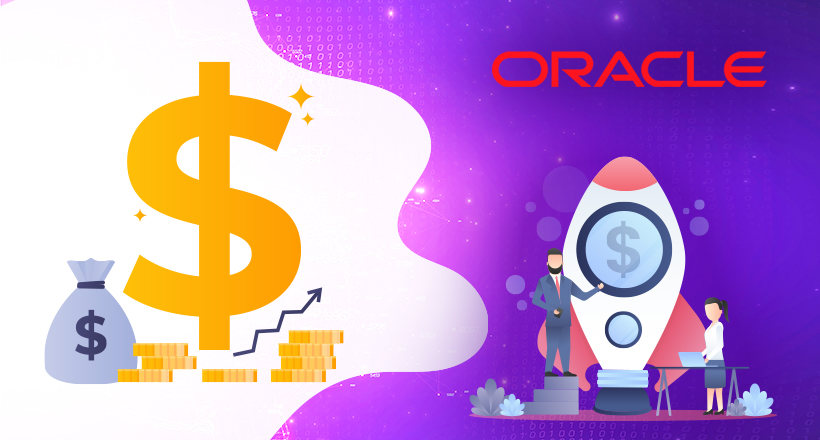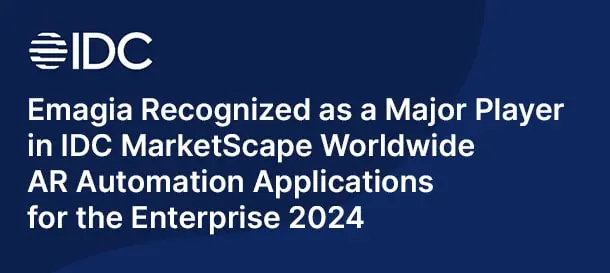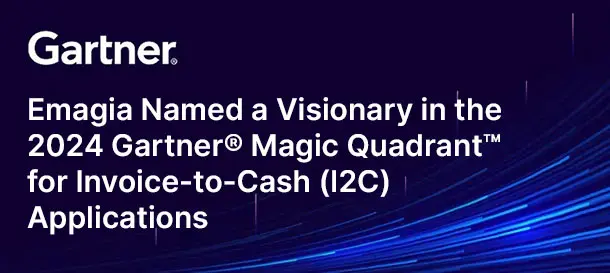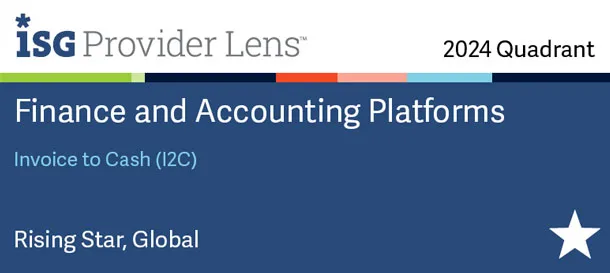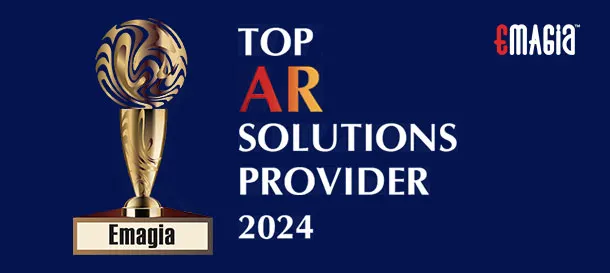Emagia’s AI-Powered Cash Application provides tremendous efficiency, accurate and lower-cost cash application across an enterprise. It accomplishes this through pattern matching, cognitive data capture of remittance from structured and unstructured documents, rules-based expert systems, deep learning, and analytics–all applied to invoice matching. But to work with Oracle, your cash application platform must accommodate Oracle’s particular cash application framework.
Automated Cash Application
Cash application automation has taken a pronounced step forward in its evolution. This next-generation automation results from combining advanced technologies to overcome the boundaries that have prevented faster, cheaper and more accurate cash application.
Rules-based auto-cash systems supported by robotic process automation (RPA) moved companies forward in cash application from years ago. RPA captures and sends data to auto-cash engines, yet it is strictly rules-based, and it can only work with structured data. The ERP auto-cash systems that RPA feeds depend on extensive rules databases and still require manual intervention.
Further, for a large enterprise with multiple ERPs, cash application operations are segregated by ERP system. So, the organization lacks a holistic view.
Hyperautomation through AI
Cash application involves data gathering from a host of sources and formats. It has been expensive, time-consuming, and prone to error. An effective automation system must correctly identify and extract specific data from all those sources and formats and input it into a formatted cash application file. Global enterprises also receive data from numerous banks under varying regulations, including the EU’s new PSD2, and in multiple languages and currencies.
New intelligent technologies overcome these challenges. Artificial intelligence (AI)—which includes machine learning, cognitive data capture, and digital assistants—provides a new level of automation of order-to-cash processes, including cash application with an intelligent auto-cash engine that learns as it goes without human intervention.
These technologies boost RPA with cognitive data capture, enabling it to read unstructured and structured remittance information. Sophisticated analytics track customer characteristics and history for highly refined matching. Integrating this power in a solution that sits on top of a single-source data lake with enterprise-wide data, these technologies overcome the barriers to true automation.
AI-powered cash application automation is just part of the new-generation end-to-end order-to-cash platforms. Gartner calls these comprehensive smart automation platforms “hyperautomation.”
Integrating Cash Application with Oracle
ERP systems differ. Oracle has its attributes and approaches, and an effective hyperautomation system must accommodate them. For example, to transfer the applied cash data from an external cash application system to an Oracle ERP requires a file based on interface.
A critical distinction of Oracle’s ERP systems is how they handle short pays and deductions. Many ERPs apply a short payment to the invoice, close that invoice and create a residual document representing the short-paid or disputed amount.
Oracle’s Short Pay Open Invoices
Oracle handles short pays differently. Oracle reduces the balance of the invoice by the paid amount, leaving the invoice open but showing the short-paid amount. For example, for a $75 payment on a $100 invoice, Oracle will reduce the balance of the invoice to $25 and leave it open. So, an external AI-boosted cash application system with an auto-cash engine must be able to provide the input in alignment to Oracle’s cash application processes.
Similarly, general ledger account numbers output by an O2C platform must match the GL in Oracle. Intelligent systems like Emagia’s produce those outcomes.
An enterprise could opt to use Oracle’s internal auto-cash engine, and some may want to if they have just one ERP. In that case, once the cash-application module of the O2C platform has acquired the remittance information, it feeds it to the ERP’s auto-cash engine.
But the significant advantage of the O2C platform is its operation from a single data source. Therefore, it provides a holistic view of the AR portfolio otherwise impossible with multiple ERP systems. And it has an increasingly accurate application rate. So, most will opt to use its auto-cash engine.
For organizations with different ERPs, or ERPs plus middleware, Emagia provides the appropriate output within the best standard data format framework that works across all of them.
Visibility, Timeliness and Efficiency
Typically, the AR data loads into the cash application solution of the O2C platform from the ERPs in the morning by region. Organizations usually spend the day working through exceptions. Then at the end of the day, the ERP system is updated. However, the enterprise determines the frequency of ERP updates; the platform can update more frequently if desired.
AI-powered Cash Application for Oracle puts AI to work to eliminate inefficiency in the cash application process. Using the solution, companies can cut down the manual efforts associated with data capture and auto-matching by over 90% and speed up cash posting directly into their Oracle ERP system.
For a demonstration of AI-powered Cash Application, submit your request here
